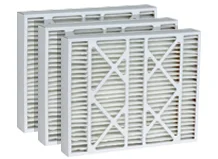Can you imagine a time when the air in homes was purified by the silent work of houseplants, not machines? Even with modern technology, many of us still turn to these green allies for cleaner air. But which plants are the most effective at this natural purification? Let’s dive straight into identifying the best houseplants for freshening up your living space and enhancing your air quality.
Key Takeaways
- Spider Plants and Snake Plants are ideal for easy care due to their ability to adapt to diverse soil types and less light.
- Chrysanthemums, besides improving air quality, bring color to your space by absorbing varied toxins.
- Houseplants require sunlight, water, and nutrients to enhance their air filtration capabilities.
- Choosing houseplants requires safety considerations since some, such as Oleander or Poinsettia, can cause harm upon ingestion or touch.
How Do Plants Purify the Air?
Plants are pretty amazing and not nearly as simple as they appear. Day and night, these natural wonders engage in photosynthesis.
Photosynthesis: it's how plants breathe and grow, taking in carbon dioxide and releasing fresh oxygen using sunlight and water. This essential process keeps our green friends thriving and our air clean. To kickstart photosynthesis, another process called Stomata occurs. This process is when the plant physically takes in the carbon dioxide through its leaves and roots. During Stomata, the plant also absorbs and neutralizes other gases in a process called phytoremediation. It’s this step in photosynthesis that removes toxins in the air.
What We Learned From the NASA Clean Air Study
Ever wondered how astronauts breathe clean air while orbiting Earth? NASA's quest goes beyond space exploration to include the vital task of maintaining breathable air in space. Their extensive study into the air-purifying abilities of various plants reveals not just a way to green up space stations, but a critical method for sustaining life in isolated conditions.
The results were impressive. It turns out, some of the best heroes don’t wear capes—they sport leaves. This research identified specific plants that excel at producing oxygen and eliminating volatile organic compounds (VOCs) from the environment. Let’s dive into the unique abilities of these botanical heroes and discover which ones you might want to welcome into your home to enhance air quality.
10 of the Best Indoor Plants That Clean the Air
Which plants are the best at purifying the air? Here are ten plants that can remove toxins from the air and help your air filters last a little longer.
Spider Plants
Struggle with plants? Start with the spider plant. This hardy hero requires minimal attention but offers maximum air-purifying benefits, making it ideal for both novice gardeners and busy homeowners.
Boston Fern
Grab a Boston fern to cleanse your home of formaldehyde. Easy to care for and budget-friendly, these ferns can be placed around your house to tackle air pollutants effortlessly.
Aloe Vera
The NASA study found that aloe vera was particularly good at capturing VOCs. Place this succulent in the kitchen or bathroom to purify fumes from cleaners.
Chrysanthemum
Would a plant be both a feast for the eyes and a guardian for your health? Meet the Chrysanthemum! Each bloom dazzles with vivid colors and acts as a vigilant purifier, stripping the air of chemicals like ammonia and benzene. But, a word to the wise for pet owners—while these blooms safeguard your air, they're not so friendly to your four-legged pals.
Peace Lily
Who needs a nightlight? Consider the Peace Lily. This plant doesn’t just thrive in the shadows with its elegant white flowers—it also specializes in refreshing the air you breathe at night, ensuring your sleep environment is as lush and pure as the plant itself.
More Air Purifying Plants to Try Include:
- Snake Plant
- Red-Edged Dracaena
- English Ivy
- Broadleaf Lady Palm
- Golden Pothos
Safety Concerns Before You Buy a Plant
Houseplants may not seem dangerous, but they can lead to pretty unsettling outcomes if you don’t choose the species carefully. Even the specific plant you pick out at the nursery can make a difference. Here’s what you need to watch out for:
Toxic and Poisonous Plants
Some plants, like poison ivy, are not recommended indoors. But many others are toxic to people or animals, yet most people don’t know it. While oleanders dazzle with their lush, vibrant blooms, they harbor a dark secret: a potent toxicity that endangers adults, children, and animals alike. Similarly, the festive poinsettia, a symbol of holiday cheer, poses a lesser-known risk to our four-legged companions with its mild toxins.
These are just a couple of examples from the world of ornamental plants where beauty veils danger. Before inviting greenery into your home, make sure to investigate its nature—some plants are as perilous as they are pretty.
Thorns and Prickly Leaves
There are also plants with features that cause a direct physical threat. You’d never want to put small potted cacti inside a home with kids because one of them is bound to get stuck. Be careful to look over the entire plant for thorns, sharp twigs, prickly leaves, and needles that can hurt someone.
Invasive Bugs
While you’re looking the plant over for thorns and other potentially dangerous physical characteristics, also keep an eye out for bugs. Invasive insects love hitching a ride on or inside houseplants. Once they are indoors, they can start multiplying. Before you know it, you have an infestation negatively impacting your air quality.
How Plants Supplement Air Filters
Here’s the thing about using plants to purify the air: Completely cleaning your indoor air of VOCs would mean you’d have to cover every inch of your house with plants!
Houseplants supplement air purifiers and HVAC air filters, which are much more effective at capturing particles and pollutants as they move through the HVAC system. Indoor plants can help capture the particles that the air filter misses or those that come into the home from outside before cycling through the air filter. Plants add an extra layer of protection rather than being the only layer, plus they make your home greener and homey.
However, you want to be mindful of the air filters you use. If you have a pleated MERV air filter from an original manufacturer like Filterbuy, you won’t need many houseplants. But if you have a lower-rated air filter, more plants may be necessary to make up the difference in filtration.
Get your filters in any size, guaranteed to fit, shipped right to your door for free at Filterbuy.
Frequently Asked Questions
Which plant purifies air the most?
NASA compiled a list of the best air-purifying plants. The Spider Plant, Snake Plant, Peace Lily, and aloe vera are notable for their effectiveness. Each plant has unique properties that help it excel in cleaning indoor air by removing common pollutants.
What plants remove toxins from the air?
Philodendrons, Aglaonema, Aloe Vera, Dracaena, Spider Plants, and Peace Lilies are highly regarded for their air-cleaning ability. These houseplants are visually appealing and excel at absorbing toxins, enhancing indoor air quality.
What plant removes 78% of airborne mold?
English Ivy is exceptional at purifying air, removing 78% of airborne mold in 12 hours. Its dense foliage traps moisture and absorbs mold spores and other airborne toxins, making it an ideal choice for improving indoor air quality and alleviating allergy symptoms.
How many plants do I need to purify the air in a room?
The number of plants you'll need varies with room size and plant type. While National Geographic notes it takes many plants to achieve complete VOC purification, NASA suggests a more manageable one plant per 100 square feet ratio for effective air purification.
Which plants release oxygen at night?
Orchids, spider plants, peace lilies, chrysanthemums, and snake plants are excellent for bedrooms as they release oxygen at night, enhancing sleep quality.
What is the most effective air-purifying plant?
The Snake Plant, also known as mother-in-law's tongue, is highly effective at removing toxins like formaldehyde and nitrogen oxides from indoor air.
Do air-purifying plants work?
Yes, these plants boost oxygen levels through photosynthesis and filter harmful toxins from the air, improving overall air quality.
Which plants are best for natural air purification?
Snake Plants, Spider Plants, and Peace Lilies are among the best natural air purifiers, effectively removing airborne toxins.
Are air-purifying plants beneficial for bedrooms?
Absolutely! They remove toxins and boost night-time oxygen levels for better sleep.
What plant can remove 78% of airborne mold?
English Ivy is exceptional, eliminating up to 78% of airborne mold in 12 hours, making it ideal for allergy sufferers.
Should I choose an air purifier or plants?
Both have benefits: plants naturally remove certain toxins and produce oxygen, while air purifiers excel at eliminating dust, pollen, and other allergens. Combining both may offer the best air quality.
How fast do plants purify air?
Plants purify air continuously, and depending on the plant and environmental conditions, this process can take several hours.
How often should I water my air-purifying plants?
Watering needs vary; plants like Snake and Spider Plants thrive with less water and prefer drier conditions.
Which plant removes the most toxins?
The Peace Lily is particularly adept at detoxifying air, effectively removing substances like benzene and carbon monoxide.
How can I remove toxins from the air?
Use air purifying plants, ensure proper ventilation, avoid using products that emit harmful chemicals, and keep your space clean to minimize pollutants.
What indoor plants are best for removing toxins?
Snake Plants, Spider Plants, Peace Lilies, and English Ivy are highly recommended for their ability to remove toxins and contribute to a healthier indoor environment.


.webp)
.webp)
.webp)
.webp)








